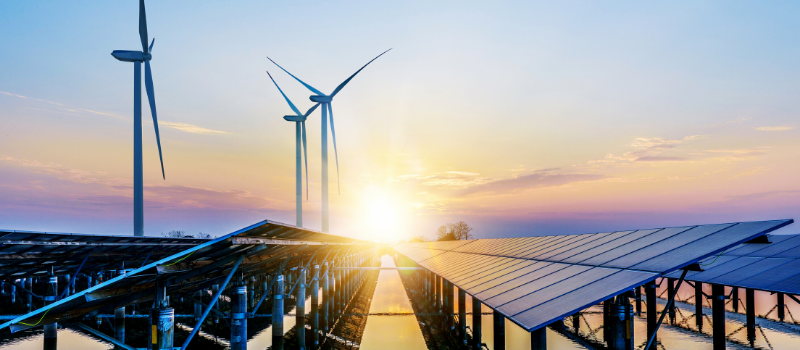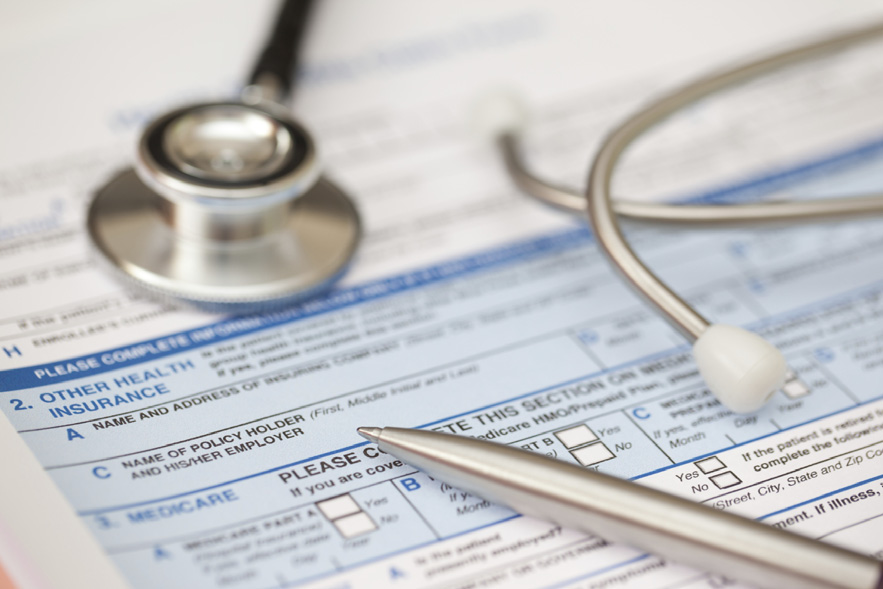The Superfund Excise Tax went into effect on July 1, 2022, and many companies are still struggling to understand whether it applies to their operations and how to properly estimate their potential liability.
Even though the Superfund Excise Tax has been implemented in the past, it last expired over 25 years ago. Under the reinstated law, the list of chemical substances has been expanded and the applicable tax has increased almost 100%. This has resulted in a large number of companies potentially being subject to this tax as well as an increase in the liability where applicable. With the second deposit date for the excise tax coming due on August 14, as well as an avoidance of penalties if a reasonable estimate has been paid timely, the importance of assessing the Superfund Excise Tax should be a top priority.
The reinstatement of the Superfund Excise Tax was included as part of the Infrastructure Investment and Jobs Act signed into law on November 15, 2021. The Superfund Excise Tax is established to raise funding for the Hazardous Substance Response Trust Fund which is administered by the Environmental Protection Agency and assists in the clean-up of hazardous waste sites when the owner or operator of the site cannot be identified. The newly reinstated excise tax is set to expire on December 31, 2031, and is estimated to generate approximately $14.4 billion of revenue. Congress’s intent is to impose the excise tax at the beginning of the commercial chain of production, distribution, consumption, and disposal of hazardous substances. Therefore, the excise tax is not assessed on purchase, but instead is applied on the sale or use of the taxable chemicals and imported taxable substances.
When Does the Superfund Excise Tax Apply?
When trying to understand whether the Superfund Excise Tax is applicable, companies must decipher whether the substance is deemed a taxable chemical under §4661 or a taxable substance under §4672.
A company will generally be assessed the Superfund Excise Tax if they import, manufacture, or produce a listed §4661 chemical in the United States intended for consumption, use, or warehousing. There are 42 chemicals that have been identified and are listed in Exhibit A, including common chemicals such as chlorine, methane, benzene, lead oxide, nickel, and cobalt.
Alternatively, a company may be subject to the tax if they utilize a taxable substance. Generally, a taxable substance is a substance where the taxable chemical constitutes more than 20% of the weight (or more than 20% of the value) of the materials used to produce such substance. If it is unclear whether an importer or exporter is utilizing a taxable substance, the taxpayer may request whether or not the substance should be added or removed from the taxable substance list by following the procedures outlined in Notice 2022-26. The IRS then has 180 days after the request is field to make a determination.
An excise tax is applied to a §4672 taxable substance only if they import a taxable substance for sale or use. Purchases of chemical substances from another company in the United States are not subject to the §4672 excise tax. A taxable substance is defined as any substance which at the time of sale or use is listed as a taxable substance by the Secretary. At the current time, there are 151 substances that have been identified in §4672(a)(3) and Notice 2021-66.
A manufacturer or importer has “used” a taxable chemical or a taxable substance and thus is subject to the excise tax, when the taxable chemicals and taxable substances are consumed, when they function as a catalyst, or when they change their characteristics or chemical composition. However, in instances of loss or destruction through spillage, fire, or other casualty, the chemical or substance is not considered to be “used”.
How Do You Calculate the Superfund Excise Tax?
The tax on §4661 chemicals is imposed on a rate per ton of taxable chemicals and can range from $0.44 to $9.74 per ton. The term “ton” is defined as 2,000 pounds and in terms of gas means the amount of such gas in cubic feet which is equivalent of 2,000 pounds on a molecular weight basis.
The determination of whether the §4661 excise tax should apply based on molecular make up or overall substance was questioned when the previous law was enacted. Specifically, under TAM 9651005, the issue identified was whether the §4661 excise tax should apply to the lead included in the lead oxide, which consisted of approximately 72% lead oxide and 28% lead, as lead was not a separately listed chemical under §4661(b). The TAM provided that the §4661 excise tax will apply to any substance that meets the minimum specification to be considered a chemical listed, regardless of its grade. The conclusion provided that the total weight of the lead oxide used was subject to the tax, and there was no reduction to the tax when considering the weight of the lead contained in the lead oxide it manufactured, imported, or used.
The IRS provides three acceptable approaches when determining the excise tax imposed on imported §4672 taxable substances. A taxpayer is allowed to:
- Utilize the prescribed tax rates provided by the IRS when determining the §4661 excise tax for 121 of the 151 substances;
- Calculate the amount of §4661 tax that would have been imposed on the taxable chemicals used in the manufacture or production of the taxable substance; or
- Calculate the §4661 excise tax based on 10% of the value of the import.
For example, assume Ethylbenzenes (a listed §4671 chemical) is imported for $1,200 per ton. The stoichiometric material consumption formula reflects that .75 pounds of benzene plus .28 pounds of ethylene are used to produce one pound of ethylbenzene. The stoichiometric material consumption equation is based on the process identified as the predominant method of production of the substance, assuming a 100- percent yield. The equation must include all materials that are consumed in the process. The excise tax assessed when the imported substance is sold can either be:
- The rate prescribed by the IRS of $9.74 per ton;
- The rate of $10.03 (.75 x $9.74) + (.28 x $9.74) which is calculated based on the use of §4661 chemicals utilized in the production process; or
- $120 per ton which is based on 10% of the value of the import.
If the importer of the taxable substance does not calculate the excise tax and the IRS provided a prescribed tax rate, the IRS will assess a tax liability based on the rate prescribed. However, if the chemical substance is one of the 30 where there is no IRS prescribed tax rate, the amount of tax assessed will be 10% of the appraised value of the table substance when entering the United States.
When Do I Have To Pay the Superfund Excise Tax?
Generally, semimonthly deposits of excise taxes are required. A semimonthly period is the first 15 days of a month (the first semimonthly period) or the 16th through the last day of a month (the second semimonthly period). Therefore, the first Superfund Excise Tax deposit related to July 1through July 15must be deposited by July 29, 2022. The tax for the remainder of July (16through 31) will be due on August 14. Semimonthly deposits are not required if the total federal excise net liability does not exceed $2,500 per quarter.
There is a special rule in September of 2022. For the period beginning September 16through September 26, the due date will be September 29. For the remaining days in September (27through 30), deposits are required by October 14, 2022.
Generally, deposits must be made through an electronic fund transfer and not mailed directly to the IRS. For EFTPS deposits to be on time, you must initiate the transaction at least 1 day before the date the deposit is due (before 8:00 p.m. Eastern time). If you have not set up an enrollment yet for EFTPS deposits, it can take up to five business days to process the request. You can access the EFTPS system here.
The Superfund Excise tax is reported on a quarterly basis by filing Form 720, Quarterly Federal Excise Tax Return, and Form 6227, Environmental Taxes where any previous deposits can be properly reported in Part III, line 5.
How To Avoid Penalties
Are you not quite sure where to begin? Does your software not yet have the capability to track the variety of information needed to properly assess the Superfund Excise Tax? You are not alone. The IRS recognized the short time frame between the reinstatement of the Superfund Excise Tax and the due date of the first deposits, acknowledging the difficulties in computing the correct amount of tax and the number of new taxpayers. Therefore, the IRS provided penalty relief in Notice 2022-15 for the first three calendar quarters the Superfund Excise Tax is assessed. The IRS agreed that no penalty will be assessed for failure to deposit if:
- The taxpayer makes timely deposits of applicable Superfund Excise Taxes, even if the deposits are computed incorrectly, and
- The amount of the underpayment for the excise tax is paid in full by the filing date for Form 720 (i.e., the 2022 calendar quarter is not due until October 31, 2022)
While the Notice 2022-15 penalty relief was welcome, the need to make timely deposits is required to avoid penalties. Therefore, even if the deposit is only an estimate, taxpayers are still encouraged to meet the deposit deadline.
Are There Any Exceptions To Paying the Superfund Excise Tax?
Section 4662(b) does provide a variety of exemptions from the excise tax, including methane or butane used as fuel, chemicals used in the production of fertilizer or animal feed, substances derived from coal, and substances used in the production of motor fuel, diesel fuel, or jet fuel. In addition, §4662(e) provides a refund of the Superfund Excise Tax for exporters of both taxable chemicals and taxable substances. Therefore, taxpayers who export taxable chemicals or taxable substances may also be eligible for a refund of taxes paid.
This article was originally published by Lynn Mucenski-Keck in Forbes on July 25, 2022.
Contact Us
For more information on this topic, please contact a member of Withum’s Business Tax Services Team.



